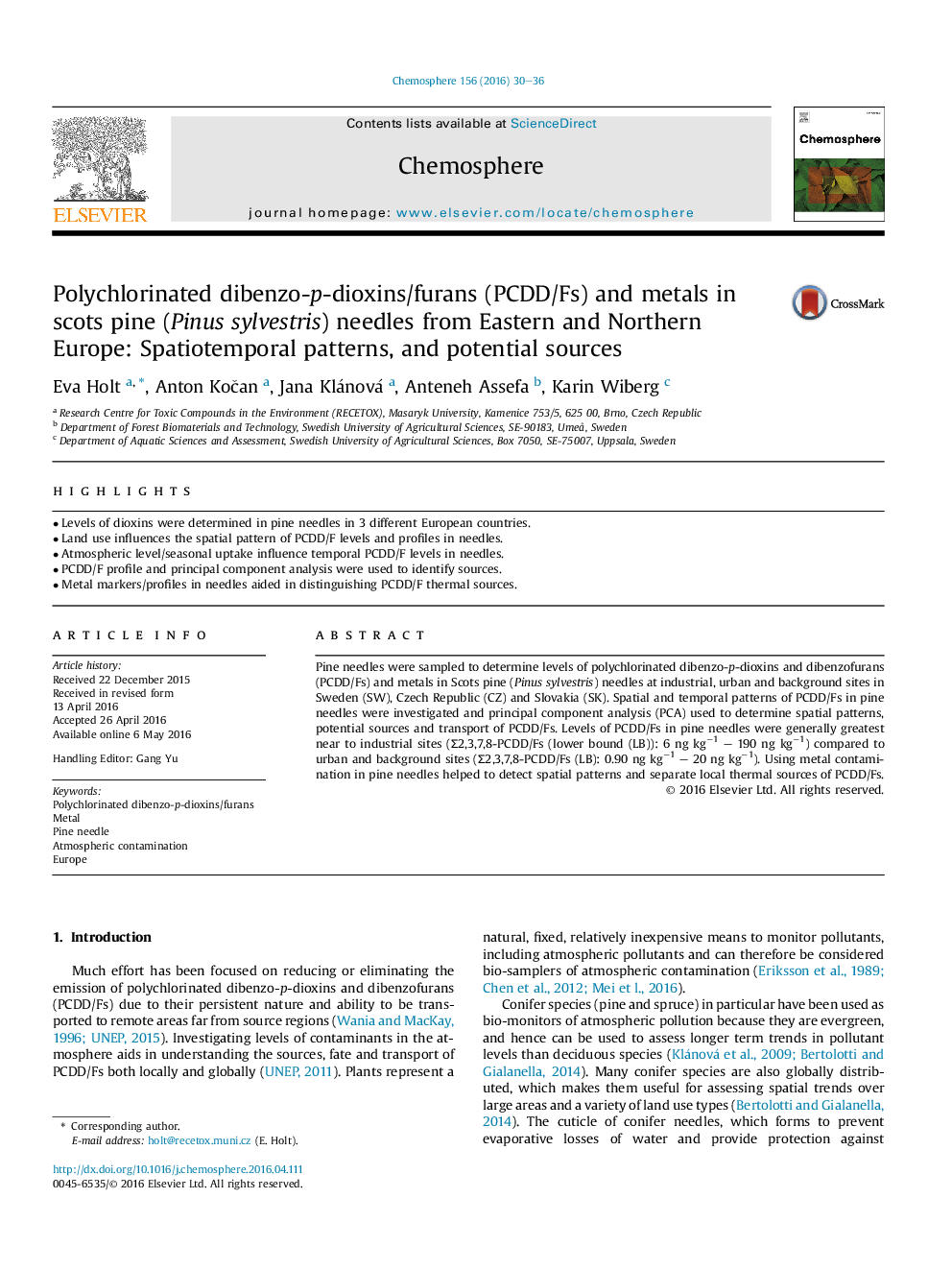| کد مقاله | کد نشریه | سال انتشار | مقاله انگلیسی | نسخه تمام متن |
|---|---|---|---|---|
| 4407696 | 1618815 | 2016 | 7 صفحه PDF | دانلود رایگان |

• Levels of dioxins were determined in pine needles in 3 different European countries.
• Land use influences the spatial pattern of PCDD/F levels and profiles in needles.
• Atmospheric level/seasonal uptake influence temporal PCDD/F levels in needles.
• PCDD/F profile and principal component analysis were used to identify sources.
• Metal markers/profiles in needles aided in distinguishing PCDD/F thermal sources.
Pine needles were sampled to determine levels of polychlorinated dibenzo-p-dioxins and dibenzofurans (PCDD/Fs) and metals in Scots pine (Pinus sylvestris) needles at industrial, urban and background sites in Sweden (SW), Czech Republic (CZ) and Slovakia (SK). Spatial and temporal patterns of PCDD/Fs in pine needles were investigated and principal component analysis (PCA) used to determine spatial patterns, potential sources and transport of PCDD/Fs. Levels of PCDD/Fs in pine needles were generally greatest near to industrial sites (Ʃ2,3,7,8-PCDD/Fs (lower bound (LB)): 6 ng kg−1 – 190 ng kg−1) compared to urban and background sites (Ʃ2,3,7,8-PCDD/Fs (LB): 0.90 ng kg−1 – 20 ng kg−1). Using metal contamination in pine needles helped to detect spatial patterns and separate local thermal sources of PCDD/Fs.
Journal: Chemosphere - Volume 156, August 2016, Pages 30–36